Original article by Zackary Skelly Chris Ahsing, Dragonfly Ventures
Original translation: TinTinLand
The crypto industry is growing rapidly, but comprehensive analysis of salary data is scarce, which can be a hindrance for startups seeking strategically directed growth. This annual salary survey report is conducted to address this issue.
Dragonfly Capital will provide its portfolio companies with a more granular set of data and hopes that this report will provide a clear picture of industry trends and be accessible and useful to anyone who sets, negotiates or understands compensation, whether it is a recruiting team, candidate or industry observer.
Dragonfly Capital realizes that this data can be analyzed in a variety of ways and that not all questions may be answered at this time. If you have a specific question you are interested in, please contact them at recruiting@dragonfly.xyz.
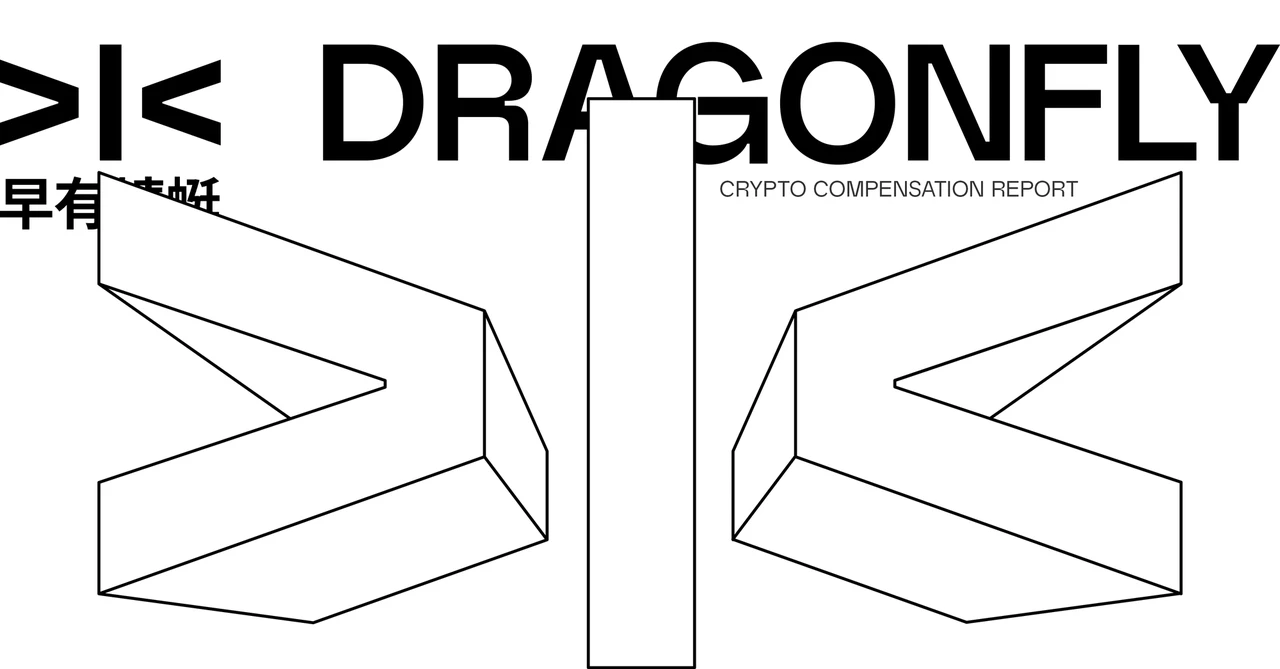
Data highlights
US companies offer higher compensation than non-US companies: about 13% higher in salary and about 30% higher in equity and tokens;
Among Seed and Series A companies, US founders have slightly higher salaries and significantly more equity/token ownership;
Most companies don’t adjust salaries based on cost of living, but this is improving as companies grow;
In most cases, companies pay their employees in fiat currencies. International companies are leading the way in cryptocurrency payments, such as USDC;
International companies are more likely to issue tokens than U.S. companies;
Infrastructure companies are most likely to issue tokens;
Nearly half of the companies pay only equity;
About a third of the companies offer both equity and tokens;
Most companies use a “percent of token” approach to calculate token offers (e.g., get 0.4% of tokens), but more companies use a market value (FMV)-based approach at later stages of financing.
Basic statistics
This analysis is based on a survey of 49 Dragonfly Capital portfolio companies in 2023. The observations are based on available data, are used to indicate trends rather than definitive industry-wide practices, and should be viewed as indicative rather than definitive. Further research requires a larger sample size, and Dragonfly Capital will continue to focus on this in future versions of the report. Special Notes:
Roles: Crypto Engineer refers to engineers who specialize in protocol or blockchain development. Marketing includes sales, marketing, and business development; compensation reflects total target income, including commissions.
Reporting Methodology: Dragonfly asked companies to select a pre-set salary range for each level of employee and report the average lower and upper salary range. However, for founder compensation, Dragonfly used the median value of the free-response survey.
Founder Ownership: Founders were asked what percentage of the equity/token pool they own; the founder compensation section of this report does not distinguish between the two.
“International” Definition: “International” refers to non-U.S. companies.
“Non-traditional” Definition: Companies with “non-traditional” funding methods either conducted a public token sale or were DAOs.
Rounding: Some numbers (for example, demographic information) may have a very small margin of error due to rounding.
Salary, Equity and Token Compensation Ranges
Below are salary, equity, and token compensation ranges offered by U.S. and international companies for the following crypto industry positions: software engineer, crypto engineer, product manager, product designer, and marketing.
software engineer

Cryptography Engineer

Product Manager

product designer

Marketing

Compared to international companies, US companies pay more across almost all roles and levels. On average, this equates to 13% higher salaries and 30% higher equity and token compensation.
Some interesting statistics:
Product designer equity and token compensation at international companies is closer to the data at US companies, while other positions are not.
Product manager positions in international companies stand out in terms of overall compensation, especially in terms of equity compensation, which is unique among all positions.
Go-to-market (GTM) positions at international companies report higher salaries and equity at the executive/director level than positions at U.S. companies.
Insights on robustness and reliability:
Compensation Insights: The data underpinning these insights is generally robust across roles and levels, and is particularly useful for comparing U.S. and international markets.
Equity and Token Insights: Equity data is moderately robust and reliable in the U.S. context. Insights on token compensation may be more robust to international data and at lower levels.
Founder Salary
As one would expect, founder compensation levels increase as companies raise more money, while equity/token ownership decreases, likely due to equity dilution. Most founders report below-median compensation prior to Series B.
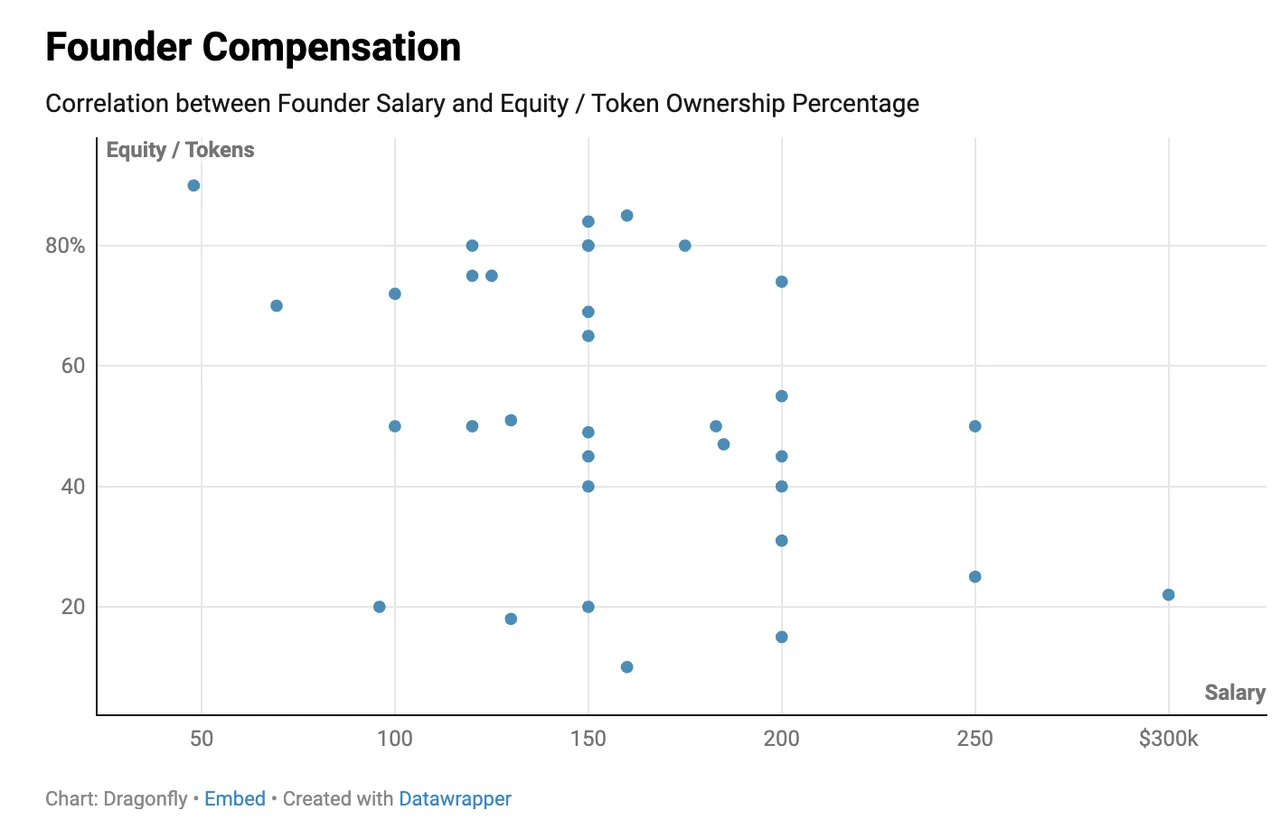
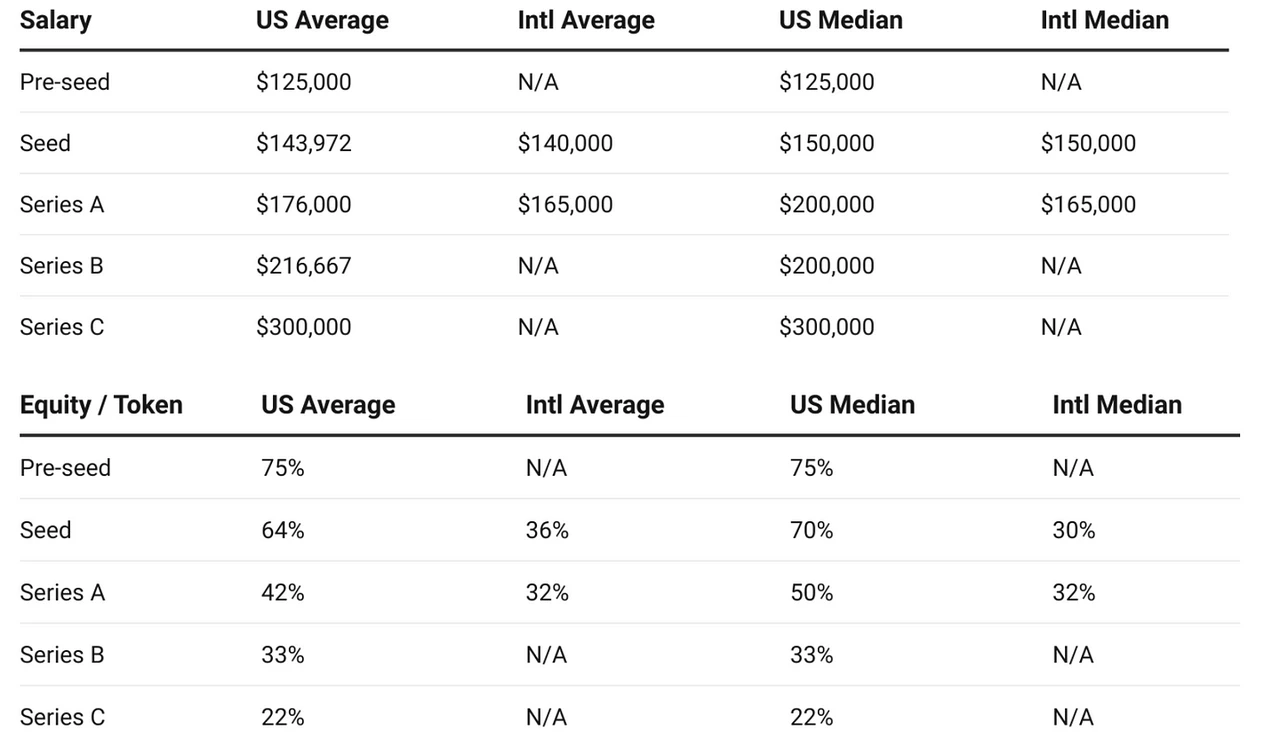
The lack of international data on pre-seed, Series B, and Series C makes comparisons between U.S. and international founders difficult. However, it is interesting to note that when comparing Seed and Series A, U.S. founders generally receive slightly higher compensation, but significantly higher equity/token ownership. This is particularly evident at the Seed stage.
Cost of Living Adjustment and Methodology
Most companies don’t adjust compensation based on the cost of living where the employee lives.
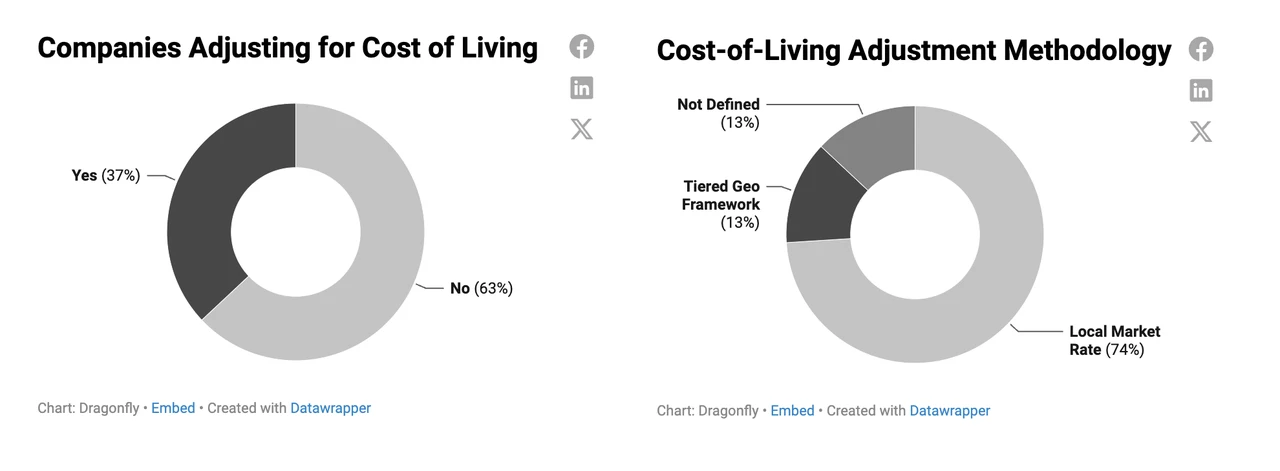
Among companies that make adjustments, Dragonfly sees two common approaches:
Adjusted to local market rates (this is the most popular method); or
Adjusting within a tiered geographic framework. With this approach, a company sets a pay benchmark starting with a specific (usually highly competitive) location and adjusts each individuals compensation based on the geographic tier, sometimes using a percentage calculated from the major metropolitan area. This is intended to balance internal pay equity with the external competitiveness of each region.
Companies that do not make cost-of-living adjustments often view their compensation as strictly tied to the value an individual creates for the company, regardless of where they are located. This will maintain a competitive advantage in terms of hiring speed and attracting top talent. However, Dragonfly always encourages companies to consider the most sustainable way to build a high-performing team within their budget.
The team may also decide not to make a cost of living adjustment due to overall purchasing power equity across regions of the world; not everyone living in a high-cost area can relocate to a cheaper location to gain a cost differential benefit.
Dragonfly speculates that there may be a compromise in the future, where some companies will shift from adjusting for cost of living to adjusting for labor costs. You can understand it this way:
Cost of Living: “We will adjust your compensation based on rates in your area.”
Cost of Labor: “We will adjust your compensation based on the demand for your position in your area.”
For example, the cost of living may be low in certain remote areas of Texas, but the demand for petroleum engineers there is high, which drives up salaries for those positions.
There is not enough industry data to easily implement labor cost adjustments (especially in the crypto industry, such as protocol engineer demand in a specific city/country). However, many salary experts and data providers are considering this model, and Dragonfly believes that teams can benchmark and adjust based on more standardized/generic positions. Real-time salary and recruitment demand data is critical, and augmenting the data available in the market with salary data collected from candidates can be beneficial.
Dragonfly may explore trends in this area in its next salary survey, although we haven’t seen many teams take this approach yet.
In general, Dragonfly expects that hiring strategies will vary depending on the role: for example, if you are hiring for a general engineering role (e.g., a general front-end engineer), you will pay the candidate an adjusted salary; but if you are hiring for a globally competitive plus differentiated role (e.g., a Solidity engineer), you may need to pay strictly based on the value of their work.
Ultimately, this gets to the hiring trilemma we often discuss: speed, cost, and quality. At any given time, you can probably only optimize two of them.
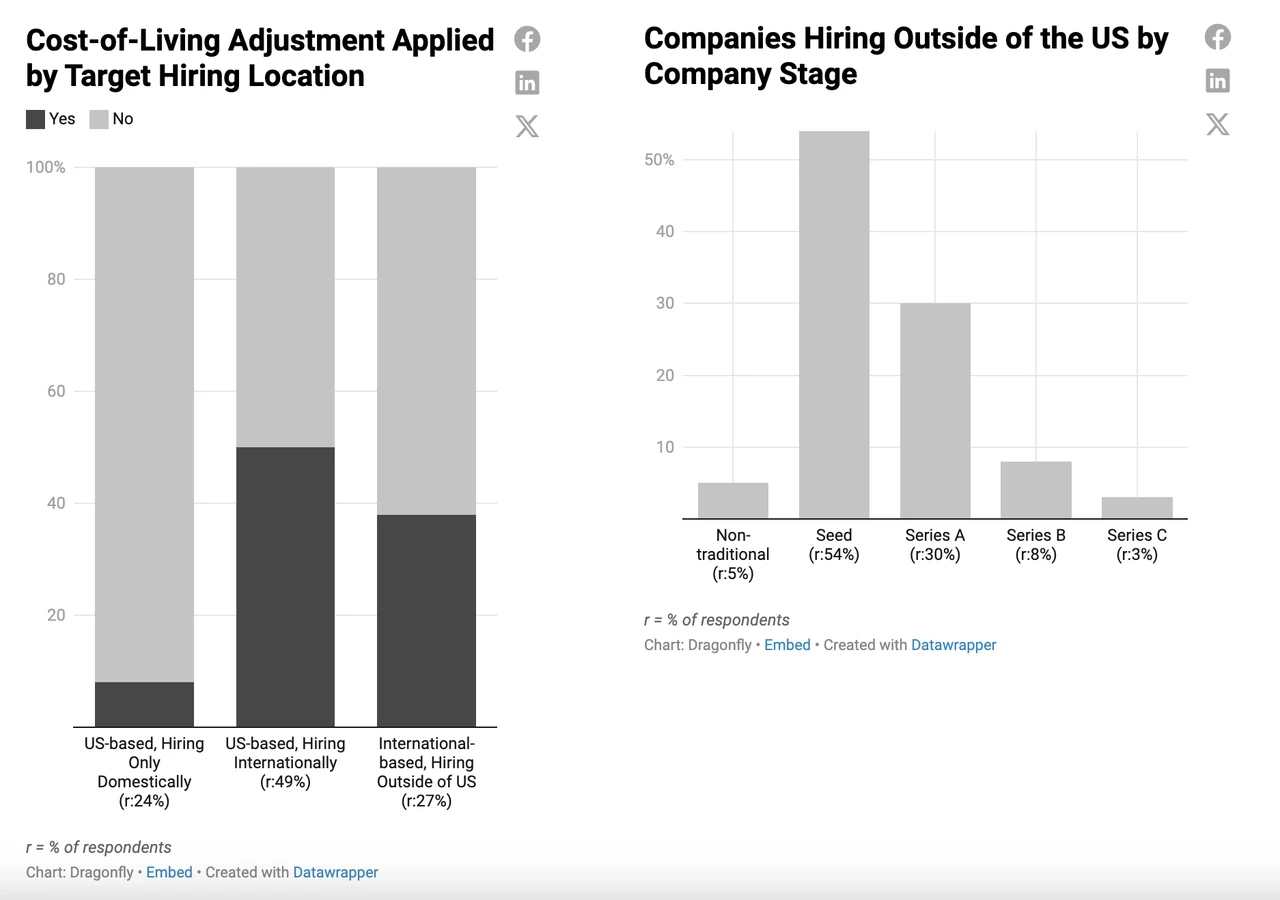
U.S. and international companies have made some progress in adjusting to the cost of living at similar rates, with international companies lagging slightly behind.
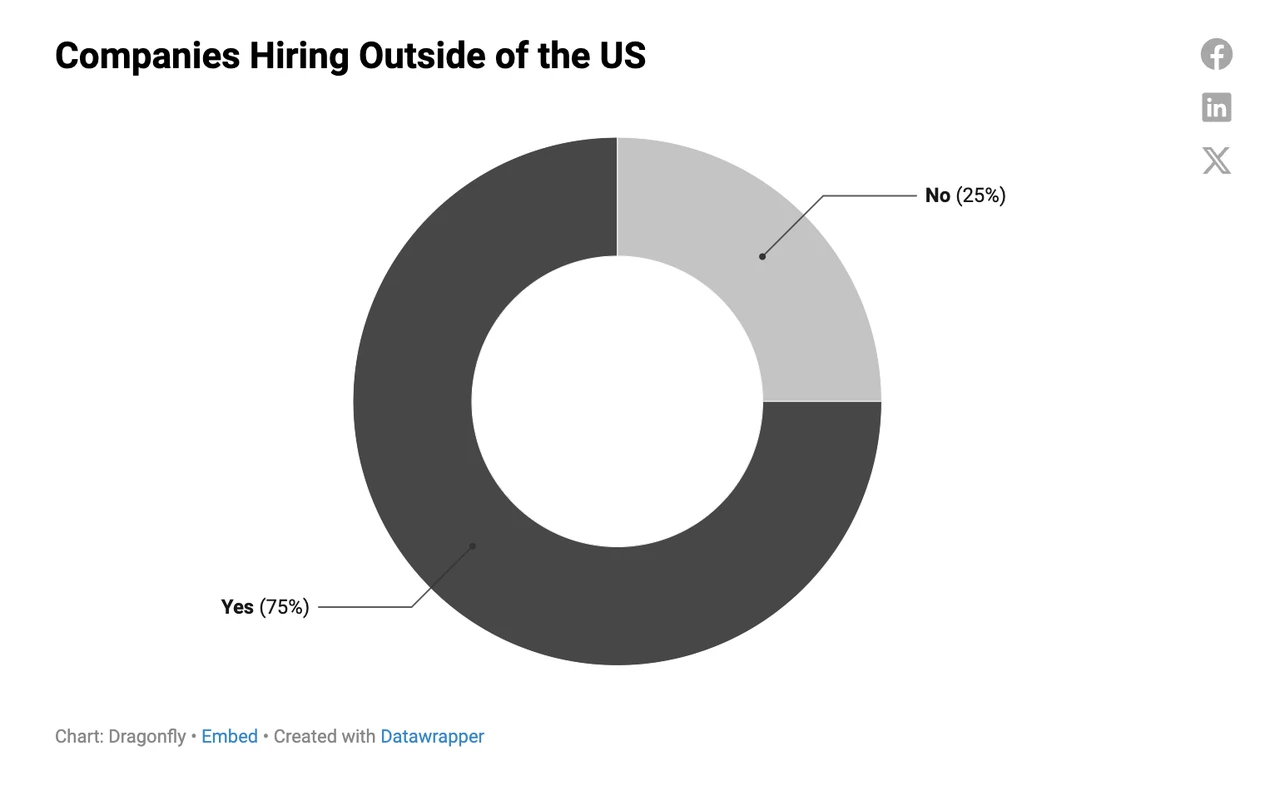
75% of companies surveyed are hiring outside the U.S., regardless of their size, stage or funding.

Companies that recruit exclusively within the U.S. rarely adjust for cost of living (COL)—which may reflect the competitiveness of the U.S. recruiting market and/or the relatively stable cost of living compared to international locations. For U.S. companies that recruit internationally, the split is more even, with half adjusting and half not adjusting. All international companies recruit outside the U.S., and most do not adjust for COL.
As companies progress through the stages of fundraising, they tend to hire less outside the U.S. However, it’s worth noting that the majority of respondents in this particular analysis were based in the U.S.
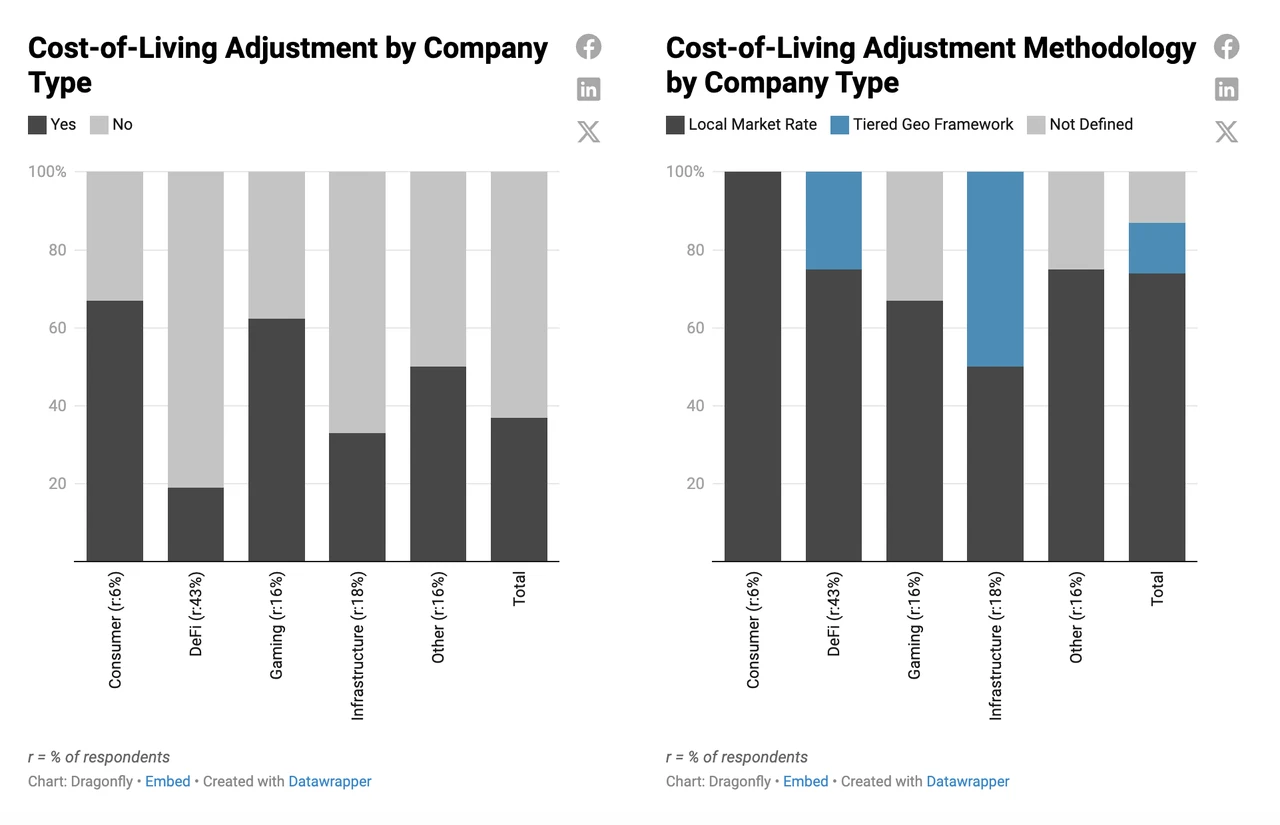
While most companies adjust compensation to local market rates, infrastructure firms – which recruit internationally and are among the largest and best-resourced companies in the survey – are most likely to adopt a more intensive approach to geographic stratification.
There is a clear trend here: most companies do not adjust for cost of living in the early stages, but as the company matures, the likelihood of doing so increases.
Seed-stage and early-stage companies (1-10 employees) are less likely to adjust for cost of living. This allows them to be more competitive while building a solid core team, which will have a lasting impact over the life of the company. Additionally, they may not have the operational expertise or resources to deploy more complex compensation structures and budgeting strategies, or hire in multiple locations. The likelihood of adjusting for cost of living over time is particularly pronounced as company size increases.
Across nearly all company sizes, stages, and funding levels, paying in local currency is preferred, demonstrating the appeal of this fair, competitive approach to cost-of-living adjustments (it’s also the easiest approach, requiring no overreaching of infrastructure).
Be aware that once this practice is established, it is very challenging to reverse cost-of-living decisions and maintain fairness. Doing so may impact employee morale, perceptions of fairness, and employer branding.
payment method
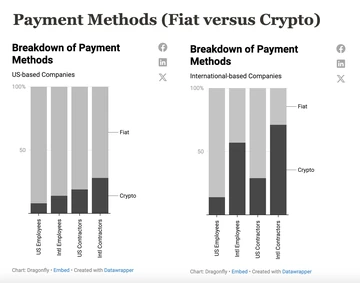
In most cases, companies pay in fiat currency.
Internationally headquartered companies are leading the way in cryptocurrency payments (e.g., USDC), especially for global workers. Companies headquartered in the United States are more likely to use cryptocurrency to pay contractors rather than employees, regardless of location, and they are also more likely to pay international workers in cryptocurrency, regardless of whether they are employees or contractors.
Companies often use cryptocurrency payments internationally to simplify cross-border transactions, mitigate exchange rate fluctuations, and/or take advantage of tax considerations in certain jurisdictions. It is also very useful for teams in regions with limited banking infrastructure or that require privacy, such as companies with anonymous contributors.
As cryptocurrency regulations and the legal distinction between paid employees and contractors evolve, global payroll providers (e.g., Liquifi) are easing the adoption process by building compliance into their services and natively supporting crypto transactions. We would not be surprised to see this impact increase over time.
Token issuance

Dragonfly’s portfolio companies strongly consider adopting tokens, with only 14% explicitly stating that they will never launch a token.
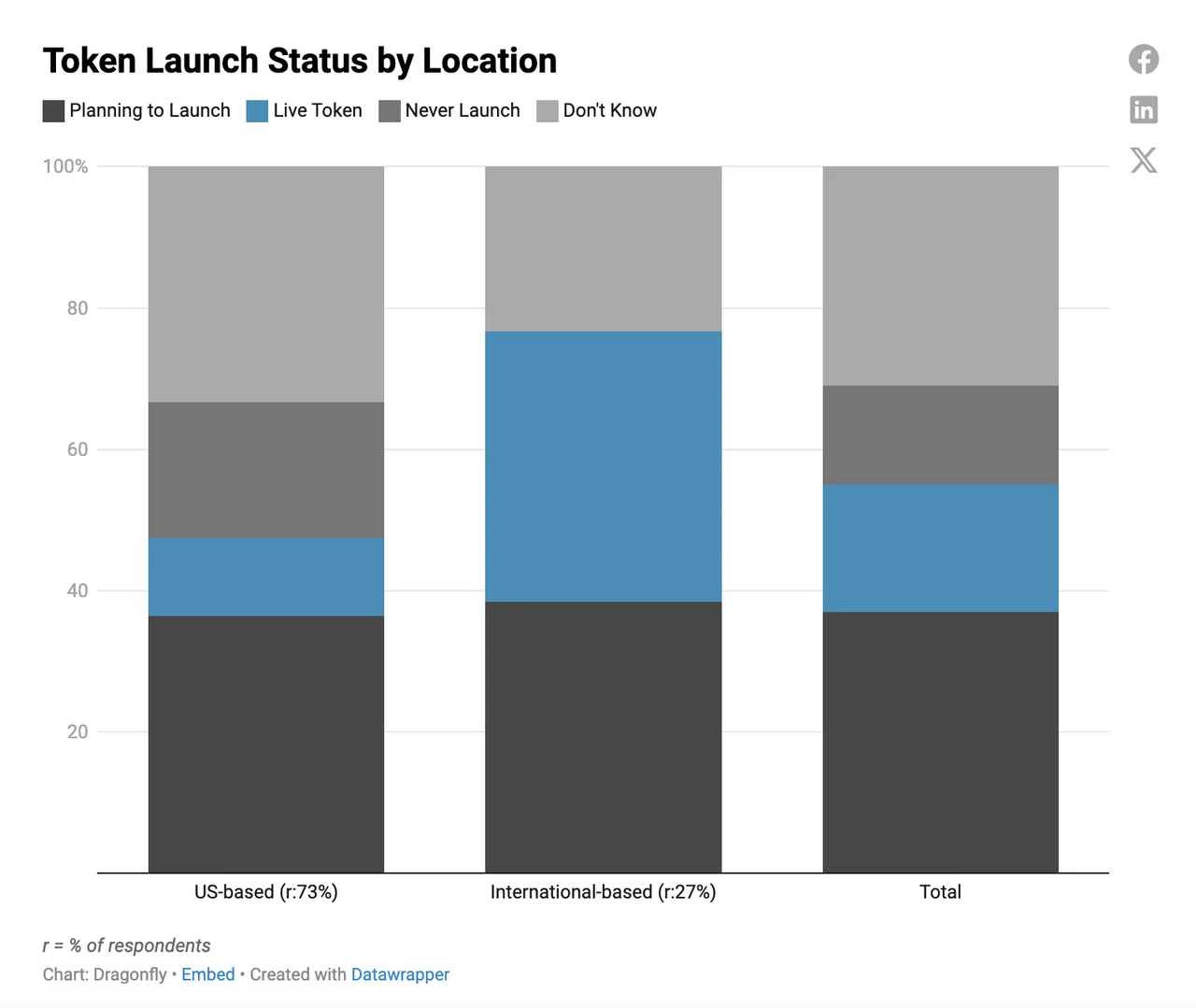
International companies are more likely to adopt tokens, with a higher percentage of companies already having or planning to launch tokens. While some companies are uncertain about future plans, none have explicitly ruled out the idea.
U.S.-based companies — likely due to regulatory concerns — showed a more diverse response, with fewer active tokens, more teams taking a wait-and-see approach to initiatives, and more opting out entirely.
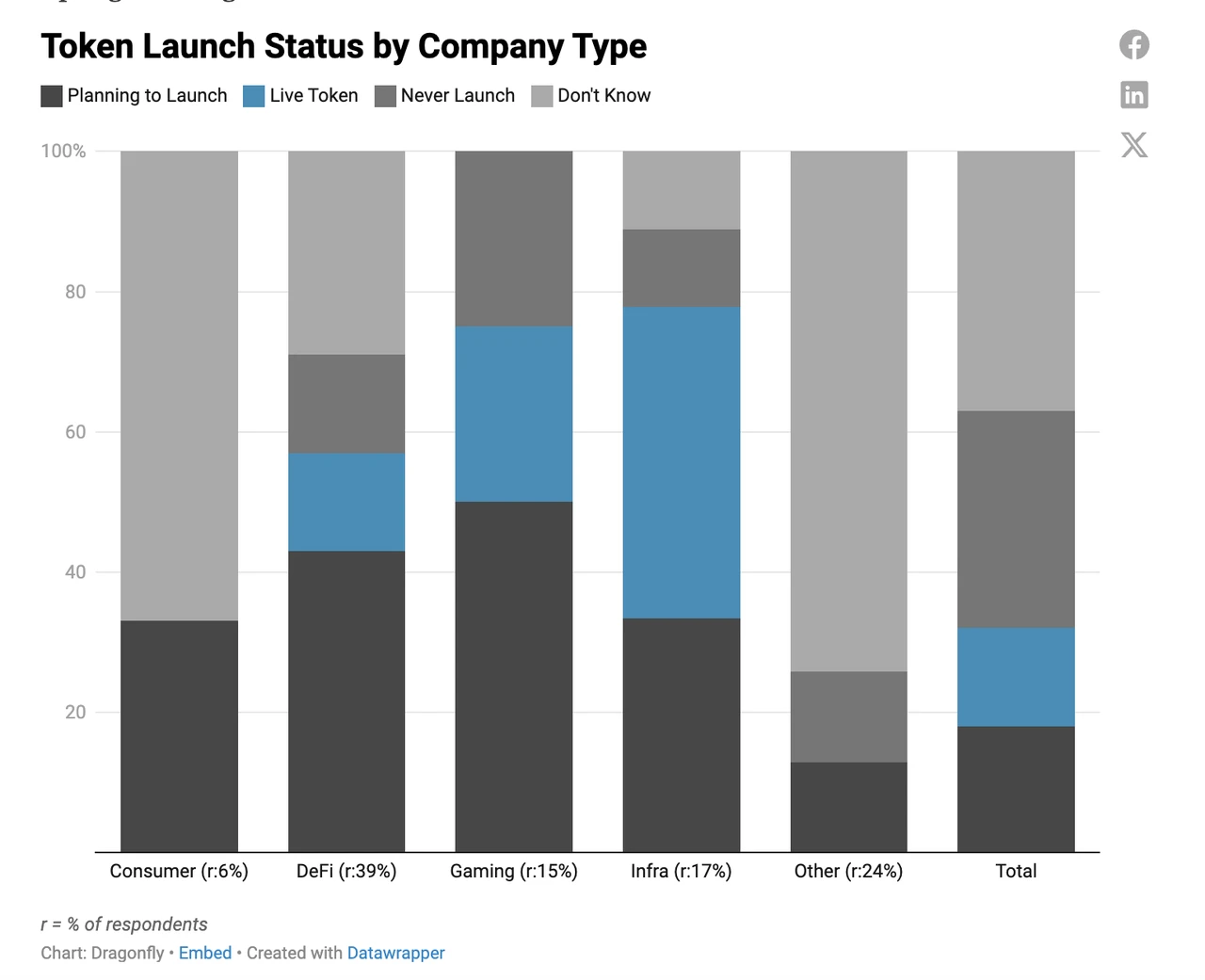
Overall, infrastructure companies are leading the way in token adoption, with more than three-quarters of companies already having or planning to launch tokens. These companies are likely to use tokens as base currencies (especially L1 and L2).
Gaming companies followed closely behind, highlighting the growing importance of tokens for game assets, currencies, rewards, incentives, content gates, and occasionally governance. DeFi also stood out, with tokens being critical to its governance, staking, and rewards business models.
Consumer-focused companies show early interest, often integrating tokens into more traditional business models, while the “other” category sees greater uncertainty.
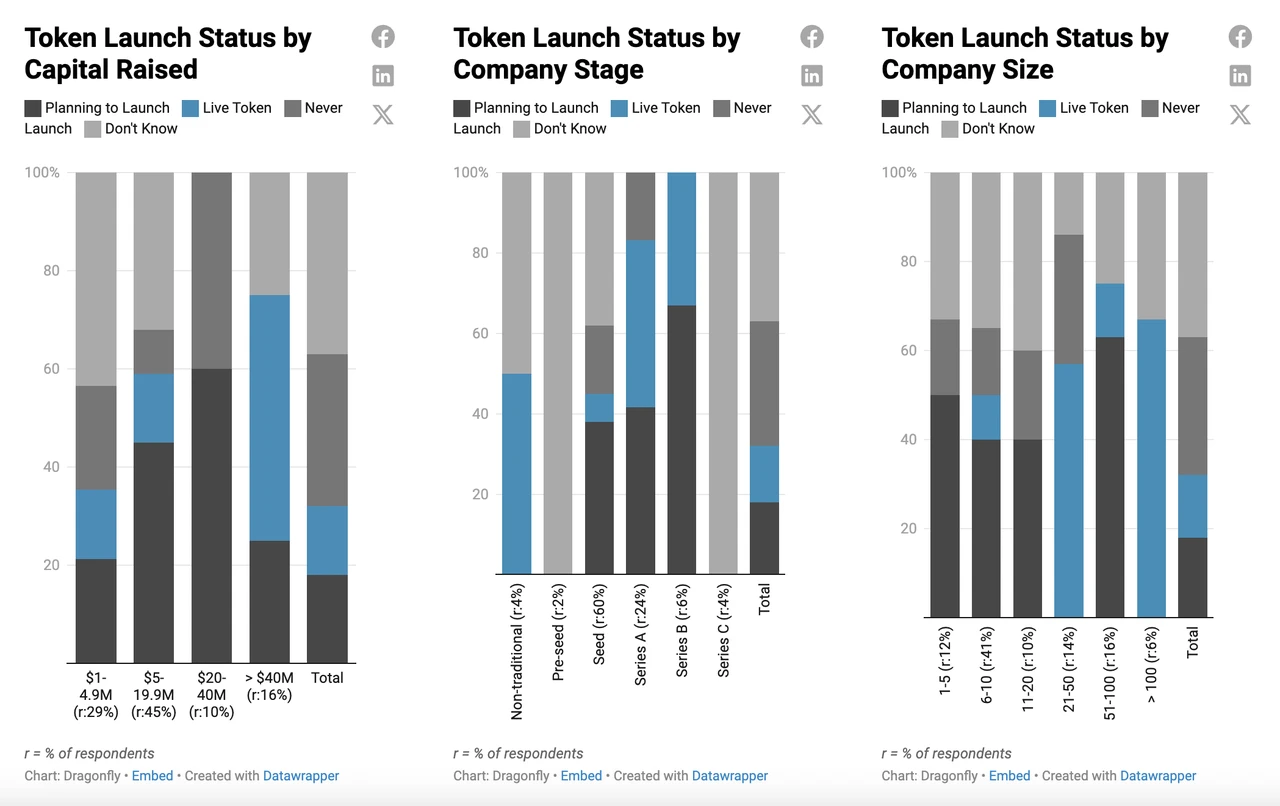
While data generally suggests that companies are more likely to plan and launch tokens as their capitalization, stage, and size grow, these factors do not create a simple, straightforward narrative.
Especially in the seed stage, small startups with financing amounts between $1 million and $4.9 million are interested in exploring tokenization, but few companies have launched in this regard in the early stages. As the companys employee size grows and more funding is obtained, the trend of launching tokens becomes obvious, especially in Series A and B.
Companies with $20-40 million in funding are the exception in terms of planned token launches, they are highly involved in planning token launches, but have not yet launched tokens. These companies fall into the Seed, Series A, and Series B categories.
For the largest companies, with over $40 million in funding and 100+ employees, participation in token activity is significantly higher. Relatedly, 75% of companies with over $40 million in funding (the highest reported funding category) are focused on infrastructure development — an industry that is naturally capital-intensive and often integrates tokens into products.
Token/Equity Compensation Plan

Companies typically offer salary and equity, tokens, or a combination of both. When planning compensation or evaluating offers, both founders and candidates must consider where and how the company creates value, whether through tokens or equity.
Almost half of the companies paid only equity. Note that while most companies said they may launch a token in the future (but are not sure yet), all projects that currently have an active token offer tokens as part of compensation. It is important to consider that the undecided companies may eventually change their response.
Dragonfly has seen other reports pointing to a trend of fewer and fewer companies offering token compensation over time, and we were curious about the impact on our own ongoing data.
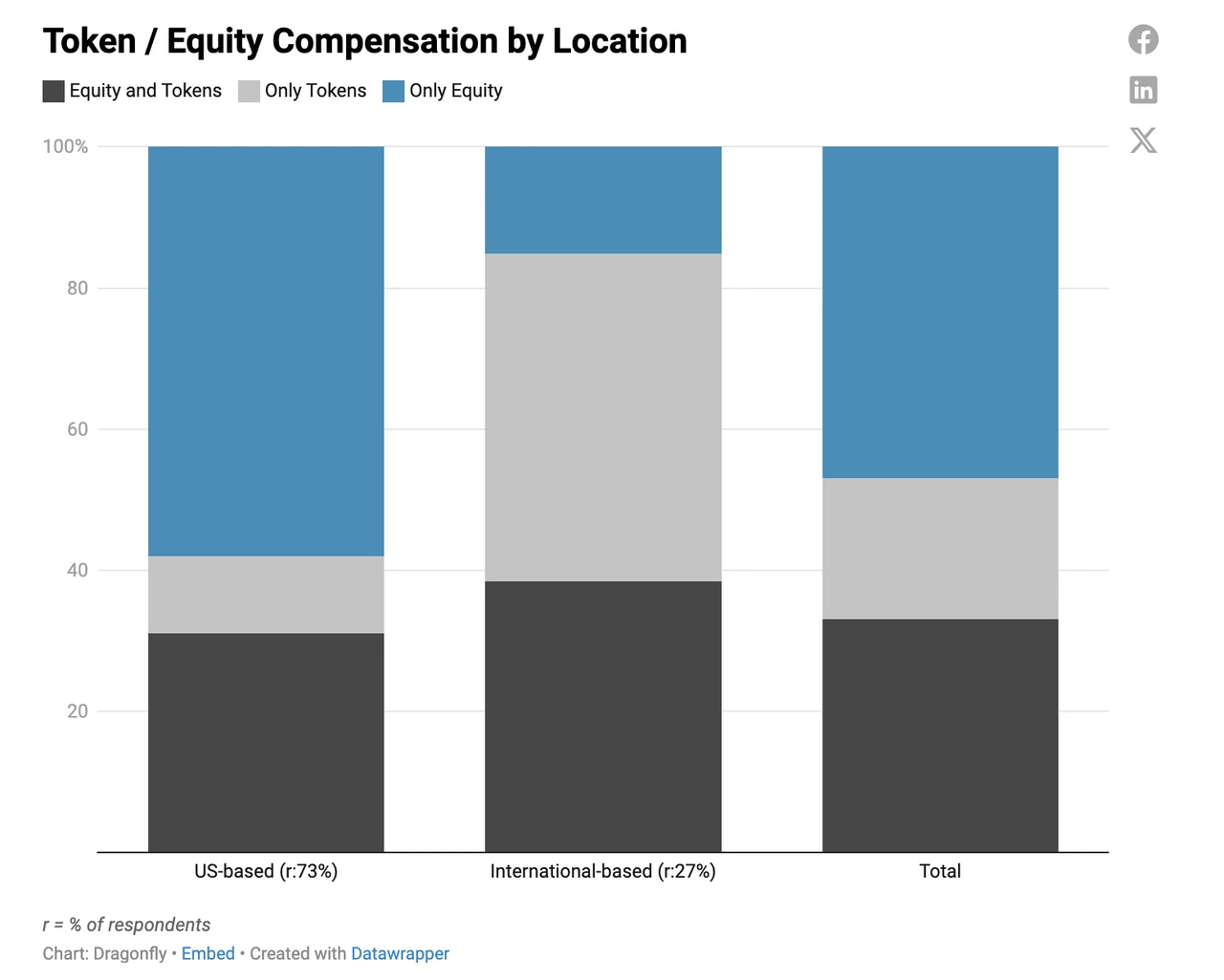
A sizeable share of both U.S. and international firms offer a combination of equity and tokens; however, preferences differ after that: more U.S. firms offer only equity, while more international firms offer only tokens (as noted earlier, international firms seem to prefer tokens overall).
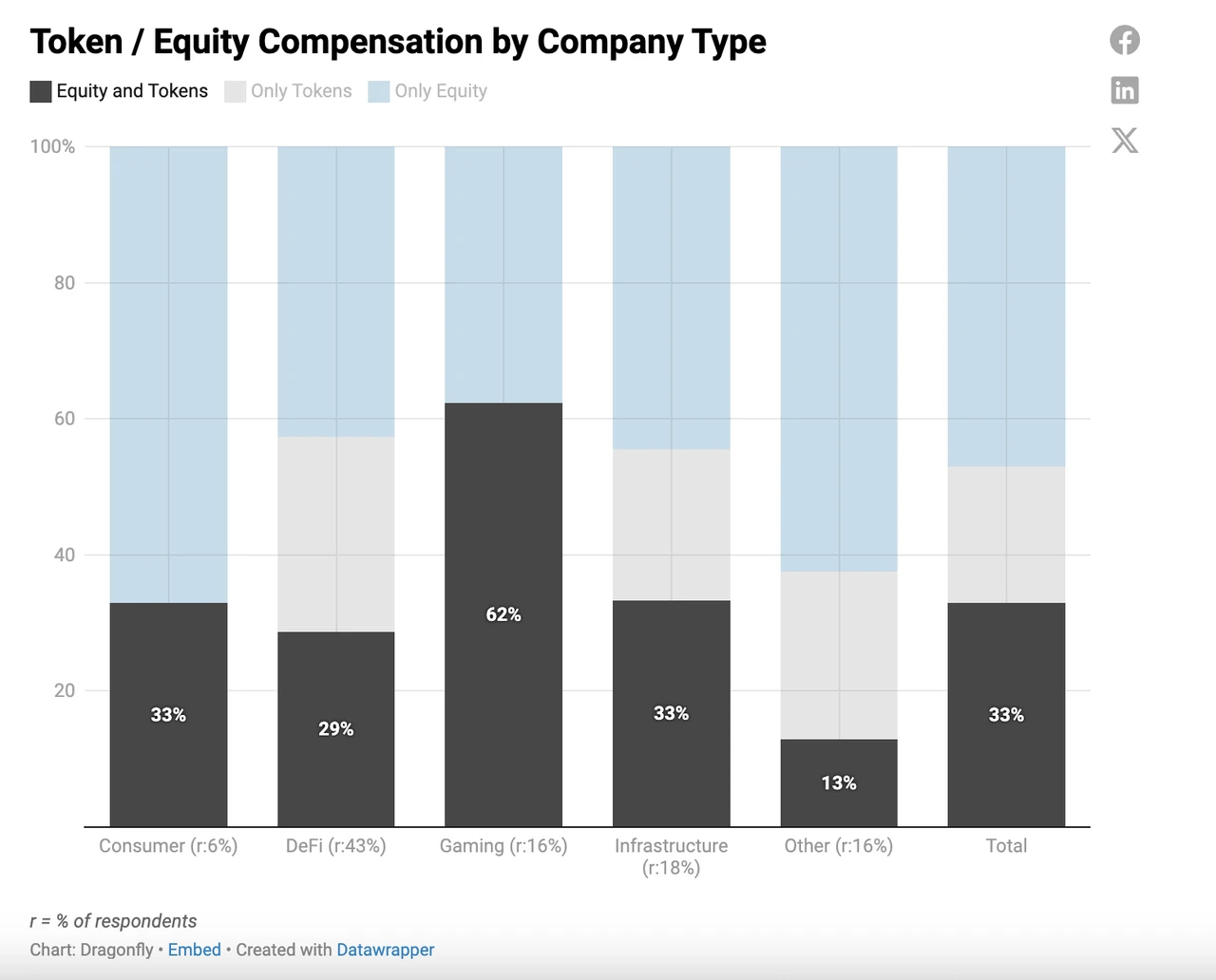
Although infrastructure companies are most likely to have or plan to have tokens, most infrastructure companies only offer equity, rather than just tokens or a mix of the two.
DeFi — another space where tokens are more common — has seen a similar trend, albeit a little more balanced in the way compensation is approached.
Gaming companies show a stronger preference for offering both equity and tokens, and notably, no gaming company offers only tokens.
All consumer and “other” companies either don’t know if they will launch a token or ultimately plan not to launch a token, so it makes sense that a disproportionate number of companies offering equity would be included.
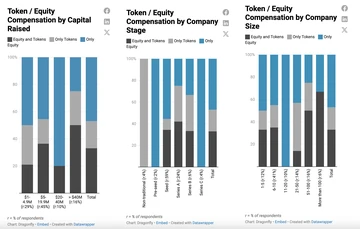
When considering funding raised, company stage, and company size, Dragonfly noticed a few things.
First, the earliest startups make heavy use of equity, and as companies receive more substantial seed financing, compensation strategies gradually diversify.
At the seed stage, Dragonfly sees companies offering exclusively equity (as mentioned earlier, none of the seed-stage companies surveyed knew if they wanted to launch a token). A handful of seed-stage companies with $1-4.9 million in funding are starting to offer token compensation, but overall, they are still primarily equity-based.
Companies that received $5-19.9M in funding are typically still in the seed stage and have more than 10 employees. More of these companies are beginning to offer token compensation, and are more frequently offering a combination of equity and tokens overall.
Second, as the number of employees at a company increases, it is more likely that the company will offer a combination of equity and tokens.
Relationship between tokens and equity

Most companies offer tokens on a pro rata basis. (This may indicate that they are using the “percent of tokens” calculation method, described in the next section.)
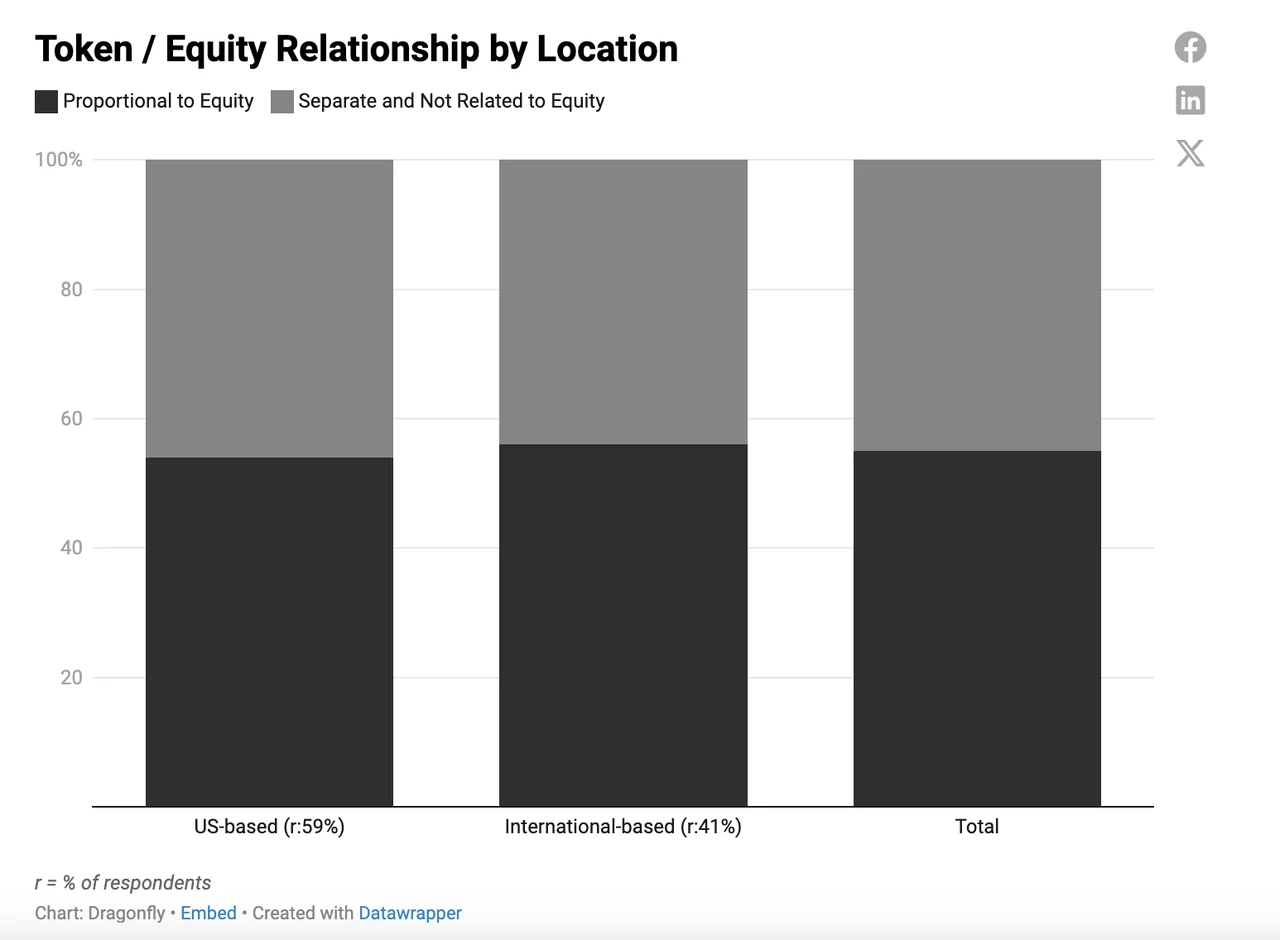
Both U.S. and international companies present a balanced distribution, slightly leaning toward a proportional relationship.
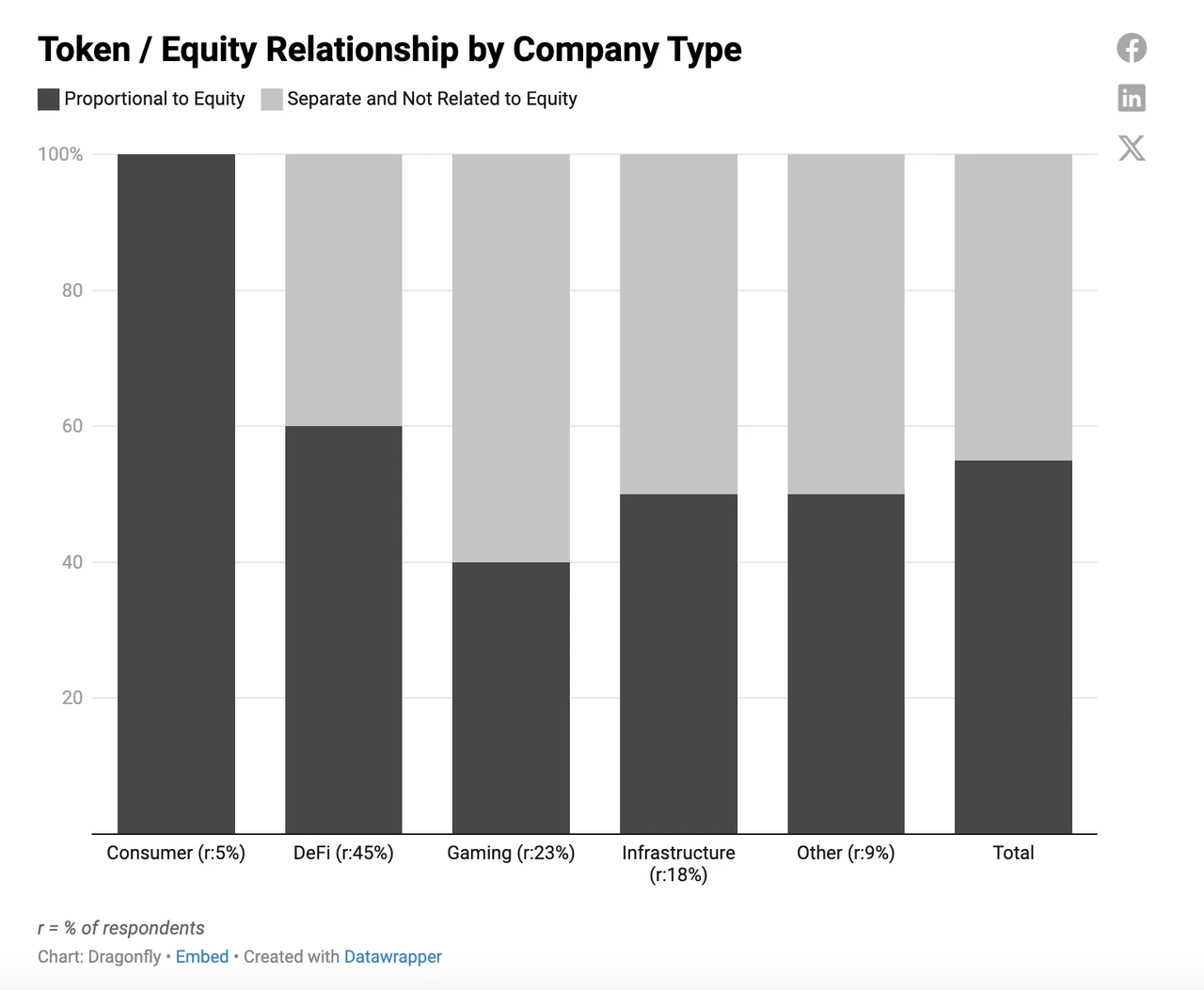
For infrastructure and “other” companies, preferences for proportionality are also relatively balanced.

Early-stage and smaller teams (seed and 1-10 employees) are more likely to have a proportional split between equity and tokens. (This trend is not consistent across all early-stage funding levels, however.)
As the size of the firm grows, the preference for proportionality weakens and no clear, dominant strategy emerges.
Token calculation method
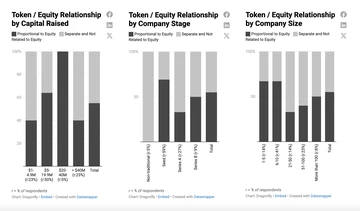
In a previous article, Dragonfly researched and outlined the methods companies use to calculate the number of tokens to give to employees. This report is not intended to be a comprehensive exploration of the best methods, nor does it cover all methods.
That being said, the most common, well-defined approaches we see are:
Market-value Based
Teams that adopt this approach first determine the total dollar value they intend to provide to employees. They then calculate the number of tokens that should be awarded based on the fair market value of the tokens at the time of calculation, grant, or vesting.
In the referenced blog post, Dragonfly observed that most teams prefer this approach due to its simplicity and ease of implementation. However, Dragonfly advises caution with this approach, as the value of token grants can fluctuate significantly due to market fluctuations, resulting in discrepancies in the token equity table. In this sense, tokens are somewhat like public equity, but they lack the same protections and stability.
Teams without an existing token rarely use this valuation method. Most commonly they rely on verbal agreements to provide tokens in the future in proportion to equity distribution. Another approach is to use a market value calculation on the fully diluted value of the tokens based on the fully diluted value of the venture capital firm (VC) that receives the rights to future tokens. Since the VCs token price is fixed, this provides a fair basis for compensation until the token becomes publicly available.
Percentage of Tokens
This approach attempts to create a similar methodology to how traditional startups calculate equity-based awards. It is the only approach that accounts for market volatility and mitigates employee pay inequality while minimizing unnecessary token dilution and preserving asymmetric upside for employees.
Using a percentage of tokens approach requires careful planning from the early stages. Broadly speaking, you can take the same ranges you used for equity and tweak them to account for token-specific nuances, ultimately awarding a fixed percentage of the token pool.
other
“Other” approaches could include year-end bonuses, performance-based bonus structures, a sliding scale between equity and tokens, and an indeterminate approach.
In general, most companies use the “percent of tokens” approach.
There are clear differences by region, with US teams being more likely to use the token percentage approach.
Gaming and “other” companies are more likely to use the “percent of tokens” approach, while infrastructure is more likely to use a market value-based approach. As funding stages advance and funds raised increase, more companies adopt a market value-based approach.
Seed-stage companies and companies that raised $10-40 million in funding mainly use the token percentage method. Starting from Series A, the market value-based calculation is more popular, especially among companies with 21-50 employees, and more prevalent in Series B and companies with more than 100 employees. As an exception, companies that raised more than $40 million tend to use a balanced combination of market value-based calculation methods and other undefined methods.
Dragonfly recommends that early-stage teams use the token percentage approach. While there is some intuition as to why later-stage teams might tend to use a market value-based approach (e.g., their token price is less speculative once established [and there is more data to use time-weighted or volume-weighted averages]; and/or it may provide more flexibility with their remaining token reserves), Dragonfly is now investigating the reasons for this trend with teams.
Future considerations
With future releases, Dragonfly will improve and expand in several key areas:
Enhanced Participation: Expand survey participation to ensure data collected is statistically significant and provides deeper insights (e.g., narrowing down to more specific geographies) while maintaining verifiability and trustworthiness. Will review whether it is necessary to include data points outside of portfolio companies.
Comparative and longitudinal data: By providing annual data, it is possible to better track the development of portfolio companies and/or markets. This is particularly important as the portfolio company gradually expands to include more growth-stage companies.
Flexible range reporting: To capture a more accurate picture of salary distribution, respondents might be allowed to enter their ranges in free form, rather than using predefined brackets.
Mandatory responses: Consideration is being given to requiring responses to all survey questions. While this may reduce the number of participants overall, it could significantly increase the depth and reliability of insights.
Founder Compensation: Plans to separate token and equity ownership for founders.
Position expansion: The scope of the position under investigation may be expanded, such as to include legal, financial, and marketing issues.
Token Calculation Principles: The goal is to better understand which token compensation calculation methods work well at which stage of the company, and why.
Data comparison of Web2 and Web3 companies: Plans to standardize data formats to make comparisons with Web2 easier. This includes potentially working more closely with Pave or other data providers in the survey.
Feel free to contact Dragonfly if you have any questions, feedback, or wish to participate in future surveys to further develop knowledge and practice in the crypto space.










